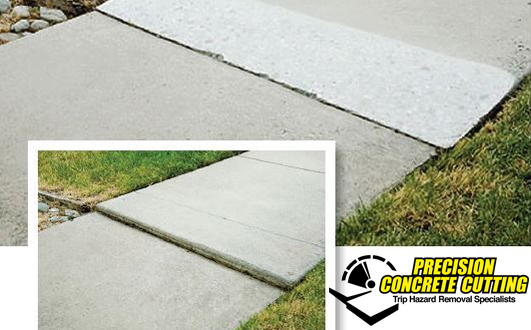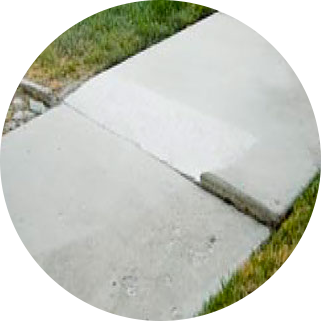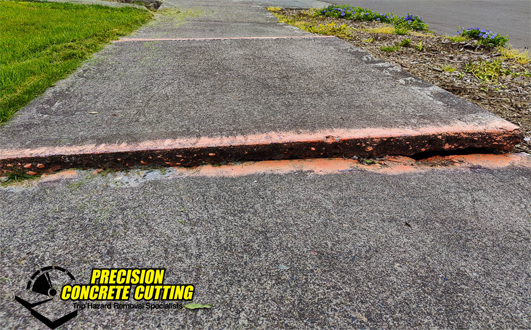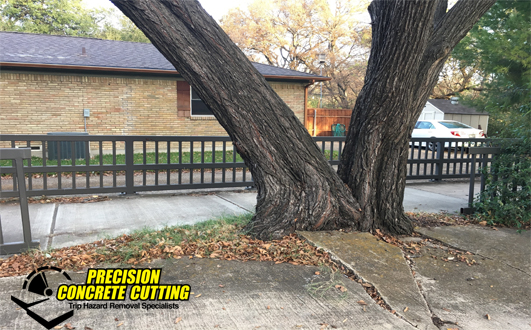Did you know that Federal law prohibits sidewalk hazards greater than 1/4 inch? It is much cheaper to have it fixed than a trip-and-fall lawsuit. If you are looking for the most trustworthy company to handle your ADA Compliance for Sidewalks look no further than PCC!
Let’s face facts, people fall and trip and sue. For the past 10 years, we have stayed in cities Communities In Schools and Universities for hundreds of thousands of dollars worth of Law Suites.
Precision Concrete Cutting can solve your problem. With our patented saw-cutting technology, we remove trip hazards from sidewalks. Call Precision Concrete Cutting at 866-792-806
According to the Americans with Disabilities Act of 1990, a ‘trip hazard is any vertical change exceeding 1/4 inch at any joint or crack. Trip hazards are a legal risk to our clients because the ADA requires strict compliance. This liability is a concern for all property owners, including hospitals, cities, schools, hospitals, private communities, and shopping malls.
Level changes
Level changes can be as much as 1/4″ without treatment, or 1/2 ” if the slope is not steeper than 1:2. Any changes in the level beyond a 1/2″ must be treated like a curb ramp, ramp, or walkway if the slope is not more than 1:20. These requirements apply to all access routes, including thresholds or carpet trim.
1/4″ Max Level Change
Do accessible surfaces need to be paved?
Concrete, asphalt, and other paved surfaces are more reliable and compliant. However, other materials such as wood and construction methods can also be used to create firm, stable surfaces. If gravel is not properly stabilized with binders, compaction, or other treatments, it will be ineffective and may require frequent maintenance.
What is the minimum slip resistance that the standards require?
While the standards require floors and ground surfaces to be slip-resistant they don’t specify minimum slip resistance or the coefficient of friction. The measurement methods and protocols used can affect the value. Although some products have a rating level, standards don’t set a minimum or maximum value.
For compliance with standards, standard methods may suffice to prevent slippage in floor materials, textures, and applications.
Is there a minimum distance between level changes?
The standards don’t require a minimum horizontal distance between vertical changes of less than 1/2 inch. These level changes might need to occur in close proximity such as at elevated thresholds. Otherwise, a minimum 48″ separation would provide enough space for wheelchairs so that one vertical change can be negotiated at a given time. To provide sufficient separation between sloped surfaces and allow for resting intervals between them, curb ramps and ramps must have clear landings and clearances at both the top and bottom of each run.
The longevity of surface openings must be perpendicular to the dominant direction of travel. But what if there’s no dominant direction?
If there is no dominant cross-traffic direction, openings should be kept to a maximum of 1/2 inch in each dimension. If space permits routes to bypass the openings completely, you can position elongated openings in either direction.
ADA Compliance for Sidewalks
Sidewalk Repair Trip Hazard in San Francisco
Sidewalk Repair San Francisco CA












